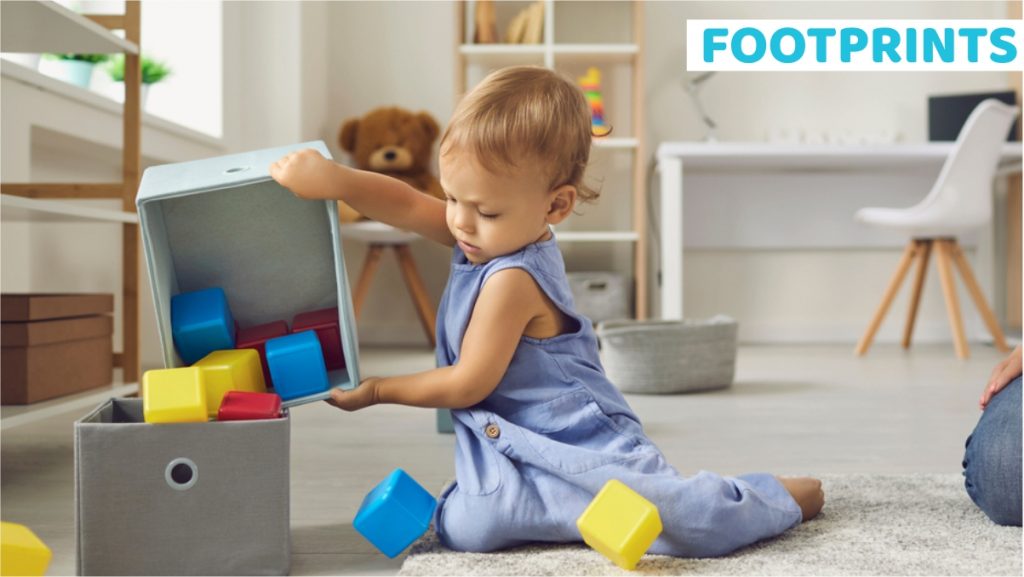
That each of us has individual strengths & weaknesses is a given! As parents, ever so often, in a zeal to see our child excelling in all spheres, we tend to focus on skills that need improvement. However, did you know that a strength-focused approach can offer rich learning opportunities for children while drawing on the child’s skills, capabilities & overall disposition? In turn, it is by understanding the child’s strengths that you can build on the child’s self-esteem. Besides research shows that being strength-focused right from early childhood, when the child begins play school, offers a better chance at success. Also, it goes without saying that in later life people who focus on their strengths are seen to be far more happy and confident.
To start with then, how does one understand the strengths & weaknesses of a child? Here are some handy tips:
Closely observe your child
It will help to observe your child in different settings when they are playing by themselves when they are in the company of other children when they are in a structured learning session & more. You will be able to find out what kind of activities they enjoy, what tasks they are eager to take on, and which tasks seem difficult to them.
Offer exposure
It is only when the child is exposed to different activities that he or she will be able to understand what is it that they really like. It is important, therefore, that you encourage experimentation. It is through these new experiences that the child could stumble on to activities that they like and also find out where their inner strength lies.
As the child undertakes various activities, you will also be able to figure out how your child learns. Some children could be very independent, others collaborative; some pick up skills very quickly, and others may gradually warm up to them.
Follow interests
Adequate exposure, in turn, will lead the child to their interests and to activities they like. It is essential to follow these interests. For example, you may discover that the child displays great hand-eye coordination and has a knack for cricket. It is then necessary to observe that passion through. A word of caution, here- finding the child’s interests will involve some trial & error. Sometimes children may like activity at one go and that is fine. At other times though activity may grow on them. Conversely, they may be interested in an activity for a while and just as you begin to think you have a prodigy at hand, they may outgrow that activity. The key is in being patient. Some of the practical tips to follow include taking some trial classes to judge the child’s interest before enrolling them in an activity. Also, it may not be very prudent to buy the most expensive equipment as soon as you enroll the child in a specific activity.
The point about offering exposure & following through on interests made, it is important to also emphasize that you need to steer clear of enrolling children in back-to-back activities. Not only will you put undue pressure on them, but you will also take away the advantages and pleasure that accrue from unstructured playtime.

Recognize diverse strengths
It is important to remember that a child’s strengths are more than academic accomplishments or prowess in extracurricular activities alone. A child’s strength can lie in working in teams or being empathetic. It is not just important that you notice these skills but also offer credit to the child for them. Here is a handy Child Strengths Checklist that you can make use of:
Character strengths
These involve looking for areas of strength such as empathy, loyalty, resilience, perseverance, independence, honesty, and more. Ever so often, children do not get enough credit for such skills.
Social strengths
This involves looking for aspects such as being a good listener, accepting responsibility, apologizing when necessary, sharing, and a lot more. Evaluating their coping skills and how they deal with frustrations could also be a good indicator.
Strength in terms of language
The child could display clear strengths in terms of vocabulary, storytelling, participating in discussions, and more
Logical ability & critical thinking
The child’s strength could lie in numbers, the ability to do mental math, and applying mathematical concepts to real-life issues.
You could also see the child having strong critical thinking abilities, making connections between issues, scrutinizing ideas, strong reasoning skills, ability to look at an issue & analyzing alternatives.
While this list is by no means exhaustive, it is important to remember that a child’s strengths may lie in diverse areas. In identifying the child’s strengths & weaknesses it is also important to remember the following aspects:
✓ Do not label the child: You may have recognized that the child is good at languages and not so brilliant in math. However, it will not help if you label the child as being weak in math. If anything it will impact the child’s relationship with the subject even further. Besides if you are dealing with a young toddler, a child who goes to playschool, you need to remember that a child’s interests & abilities can also change over time.
✓ Turn weaknesses into strengths: It is easy to pronounce that a child acts out or that he is very clingy. The important bit is also to understand the emotions behind the actions. The acting out, for example, may be a communication of deep underlying emotions. Looking at these issues from another perspective may help you nurture the child.
✓ Encourage creativity and passion: Over and above everything, it is important that you offer the child the right nurturing and support. Positive reinforcement and communication play a strong role in the child’s overall development. While you evaluate the child’s strengths & weaknesses, it is imperative that what you offer to the child is unconditional support. It is the self-esteem that will be built on account of all these efforts, that will be one of the most important markers for success in later life.

Amita is an experienced educator with over 30 years of experience. She has an outstanding understanding of child development, having worked with various age groups for prestigious businesses. She has been dedicated to handling Footprints’s Curriculum and Delivery department for the past decade. Amita’s credentials include being one of India’s few HighScope Curriculum certified trainers and volunteering as a course leader for Landmark Education, the world’s largest training firm.




